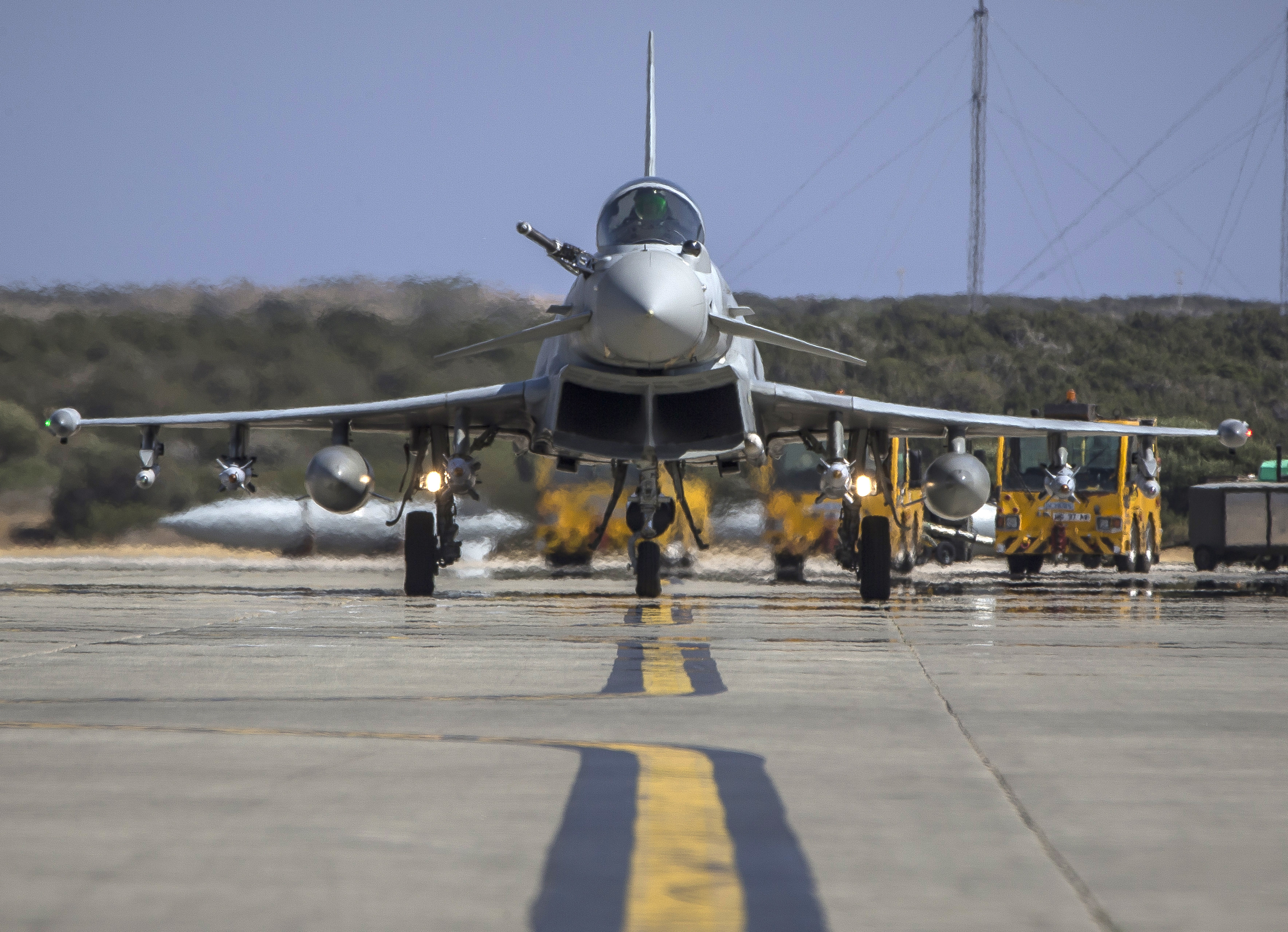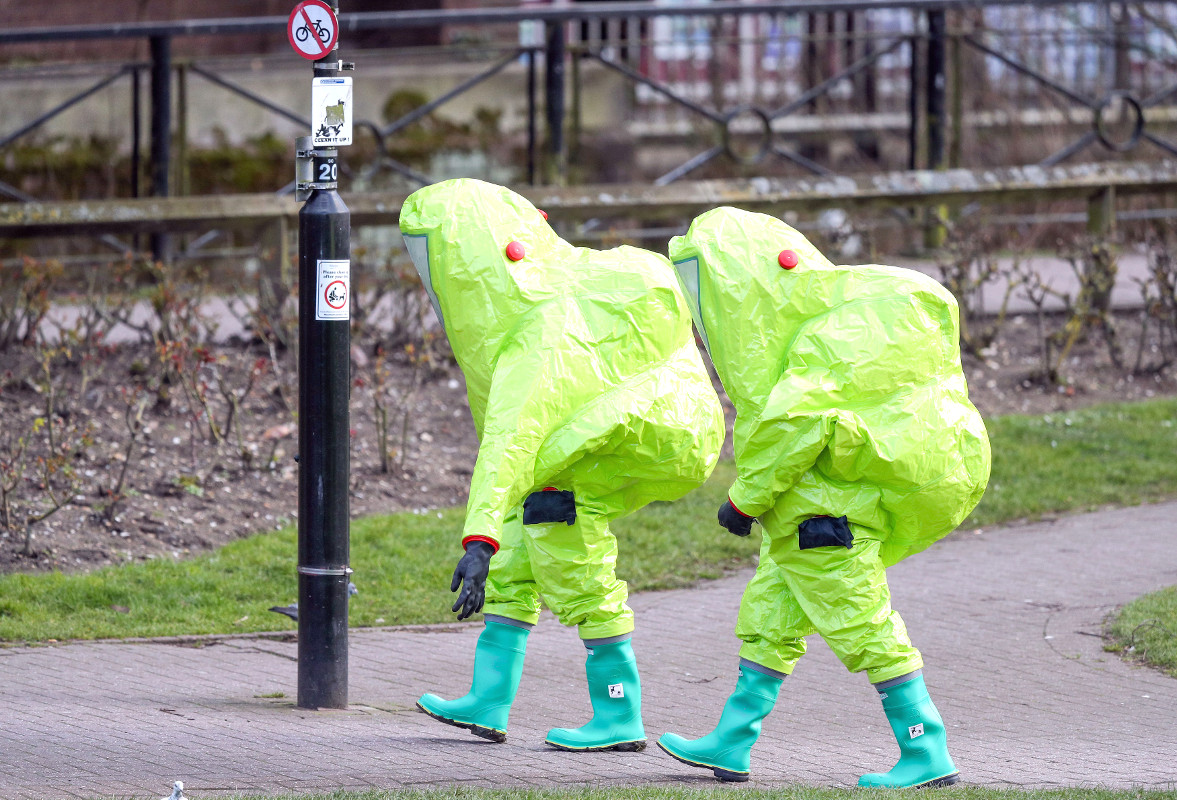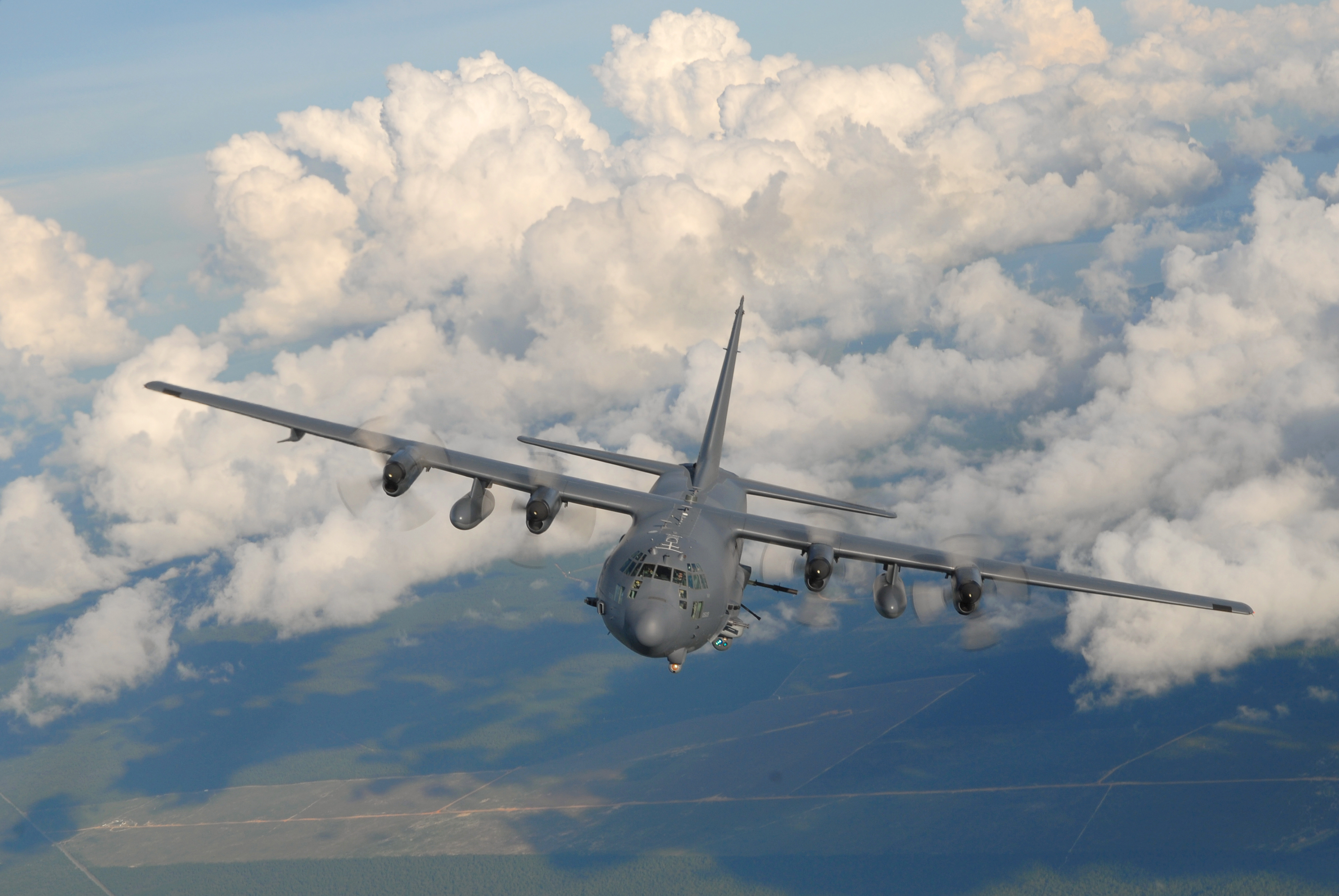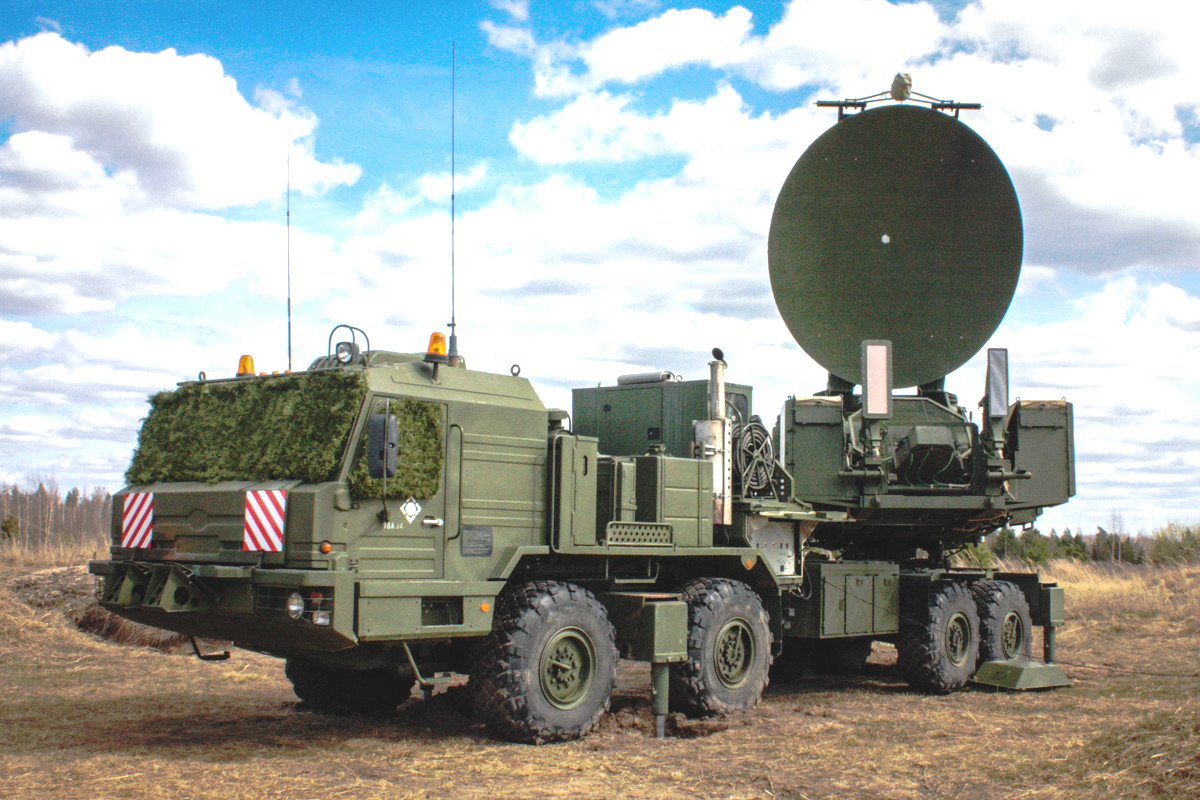Repeated attempts have been made to jam the GPS navigation systems used by U.K. Royal Air Force aircraft operating from an airbase in Cyprus, the east Mediterranean island that serves as a hub for the service’s efforts in the anti-ISIS campaign in Iraq and Syria. Two British newspapers have concluded that Russia is behind the actions and, in the past, that country has also launched electronic warfare attacks against U.S. drones in Syria, and probably also against U.S. Air Force AC-130 gunships.
Reports today in The Times and Telegraph newspapers cite “military intelligence sources” who say that the electronic warfare efforts targeted the GPS systems of RAF A400M Atlas C1 transport aircraft departing RAF Akrotiri, Cyprus, while troops were on board. GPS systems of this type are widely used for accurate aircraft navigation, increasing safety and efficiency, with most aircraft having backup systems if the GPS is lost.

The same sources cite Russia as being the only “hostile state” able to jam GPS signals in this way in the region and that doing so would be in keeping with its “sub-threshold activity,” referring to warfare that involves confrontation while avoiding open armed conflict.
The Atlas C1 is the RAF’s latest fixed-wing transport, having entered service in 2014, with tactical and strategic oversize lift capabilities that complement the older C-130J Hercules and the larger C-17 Globemaster III. Since then, the Atlas has also taken on other roles, including maritime surveillance, and is expected to completely take over tactical and special forces transport tasks from the Hercules, the retirement of which is widely anticipated to be announced next week
“The attacks could have prevented the pilot from knowing where the aircraft was or the direction it was flying in and potentially resulted in casualties,” The Times described. Each Atlas can carry up to 116 fully-equipped troops, although a mixed load of personnel and cargo is more common.
However, the same account noted that none of the attempts were successful. It is also unclear what, if any, effect the attempted jamming has had on civilian aircraft operating over Cyprus, but it appears that relevant notices to airmen (NOTAM) — notices filed with an aviation authority to alert aircraft pilots of potential hazards — have drawn attention to degraded GPS signals in the region in the past.
“This is an example of another state being hostile and reckless for no apparent reason,” the unnamed source added. “These are transport aircraft bringing in spare parts. It’s not like they are fighter jets.”
This suggests that efforts have not been made to interfere with the GPS or other electronic systems used by the RAF’s Typhoon fighter jets that are deployed to Akrotiri to take part in combat operations in Iraq and Syria. In recent weeks, these jets launched, for the first time, Storm Shadow cruise missiles to attack hardened ISIS targets in Iraq, which you can read about here.

As to the source of the GPS jamming, the Telegraph reports that it thought to be either from Syrian territory or possibly by agents on the ground in Cyprus. Alternatively, the electronic warfare equipment could be installed in aircraft or on ships at sea.
Perhaps significantly, the reports of GPS jamming against RAF aircraft in Cyprus come three days before the release of the second part of the U.K.’s new Integrated Review of Security, Defense, Development and Foreign Policy, a defense review covering the years through 2025.
The review determines that Russia is “the most acute direct threat to the U.K.” and will be “more active around the wider European neighborhood,” while the document also makes explicit reference to hybrid threats of this kind, as well as nuclear and conventional ones.
The second part of the review is expected to outline plans to address hybrid and “grey zone” warfare between peace and war. The U.K., of course, has direct experience of this kind of warfare on its soil, most notably the Salisbury attack that you can read more about here and here.

As for the situation in the eastern Mediterranean, while this is the first time that reports point to direct actions of this kind attempted against U.K. military aircraft, it fits with previous tactics that have also been attributed to Moscow. As well as jamming the GPS receivers and other data links on small drones over Syria, Russian military aircraft have been harassing their American counterparts over the country in this way to some degree for years, which The War Zone was among the first to reveal.
Similar electronic warfare activities have been reported in Ukraine, where the Kremlin is actively supporting an insurgency against the government in Kyiv, since 2014. There have been claims that Russian troops, and pro-Russian separatists, disabled those drones with electronic warfare assets before downloading video footage to reveal Ukrainian positions.
The video below shows Russian-backed separatists in Ukraine showing off a captured RQ-11B Raven drone that they claimed to have brought down using an electronic warfare attack.

While jamming against U.S. drones back in 2018 was said to be having an “operational impact” and that the Russian equipment was sophisticated enough to break through a number of existing countermeasures, the reports state that the RAF Atlas transports have not been adversely affected. However, it is likely that the drones in question were catapult- and hand-launched smaller types, without the robustness or redundancy of the kinds of communications systems found on manned aircraft.
It could also be the case that the U.K. has taken proactive measures to protect at least some of its aircraft from GPS jamming. In the past, The War Zone has reported that the U.S. Army was adding anti-jam equipment to a fleet of discreet special operations spy planes in response to operational requirements in the Middle East. Anti-jam GPS is meanwhile being deployed on many platforms, including U.S. Marine Corps F/A-18 fighter jets, for example.
In 2018, U.S. Special Operations Command did admit that U.S. Air Force AC-130 gunships operating in Syria had been subject to electronic warfare by unspecified opponents, almost certainly Russian or Russian-support forces. At the time, U.S. Army General Raymond Thomas described Syria as “the most aggressive EW [electronic warfare] environment on the planet from our adversaries. They’re testing us every day, knocking our communications down, disabling our AC-130s, etcetera.”

For its part, Russia has a wide array of man-portable and vehicle-mounted electronic warfare systems that are reportedly capable of jamming transmissions and even feeding false information into networks, including “spoofing” GPS signals and potentially sending parties and vehicles off their intended course. “Spoofing” an aircraft would potentially be far more dangerous than a simple GPS loss since the crew could be led to believe they were in a different location.
Russia has also publicized its use of these assets, including claims in 2018 that it had been able to neutralize drones attacking Khmeimim airbase and Tartus naval base in Syria using electronic warfare systems.

There is a possibility, too, that Russia is deliberately limiting the potential level of disruption caused by its jamming of manned aircraft like the RAF Atlas. While the destruction of unmanned aircraft is a relatively low-risk proposition for Russia, especially in a theater of war. Destroying a manned aircraft, especially one full of troops, and operating in international airspace, would likely result in a major escalation.
With that in mind, it could well be that the activities in Cyprus are intended to be seen as Moscow sending a signal to the U.K., showing that it is capable of interfering with British and allied operations in the region with relative impunity, should it so desire.
Whatever the thinking behind it, and whatever the U.K. chooses to do to counter it, the episode points clearly to the growing threat of jamming and other non-kinetic attacks in the region and in general.
Contact the author: thomas@thedrive.com
